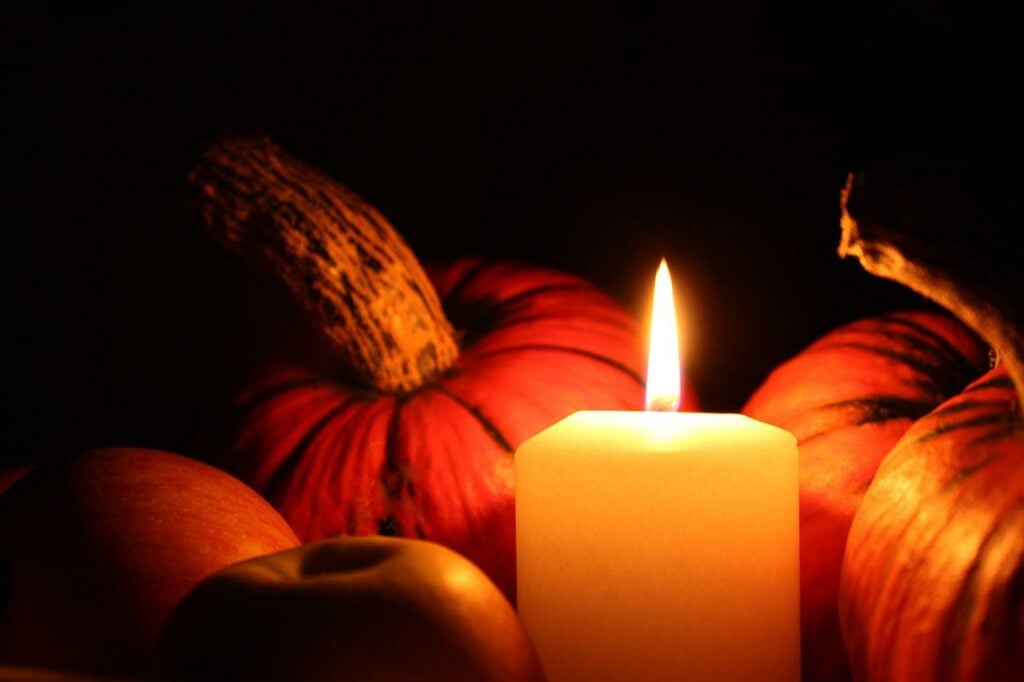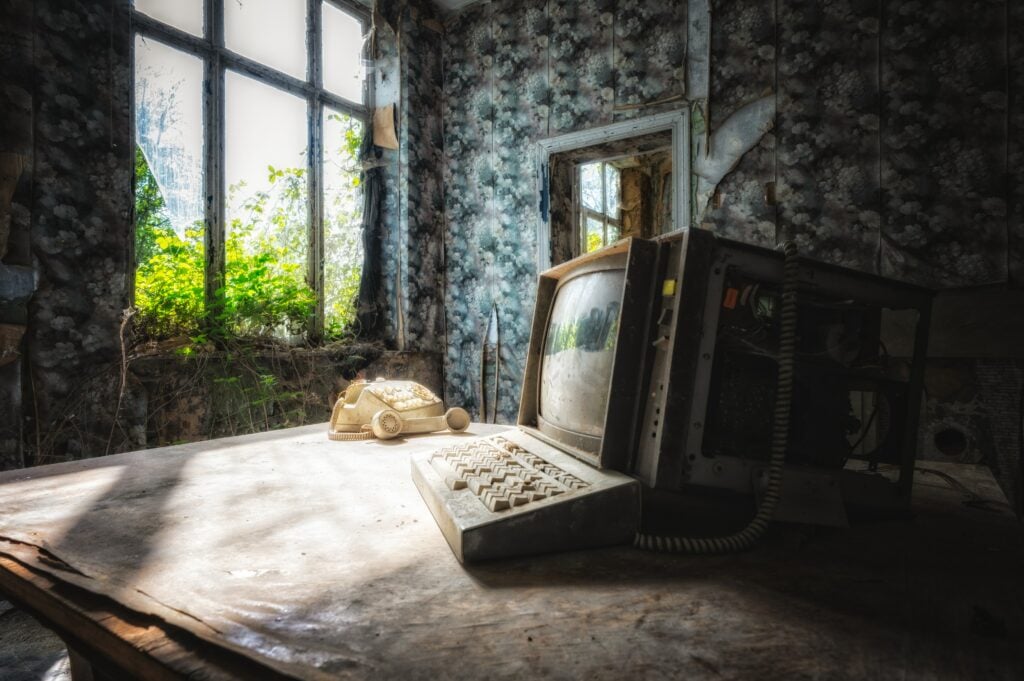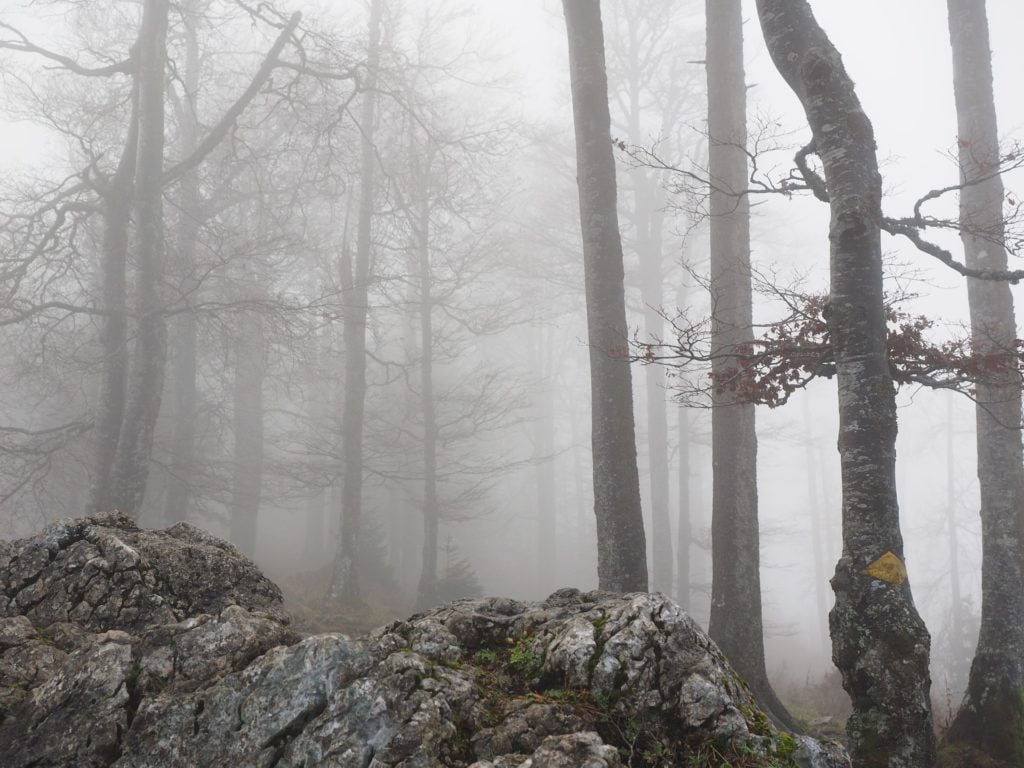Previously: What To Do On Halloween, 2021 Edition.
Well, we are a little more than a week out from Halloween 2022, so, as is tradition, it’s time for our annual What To Do On Halloween mega-post. Below, you’ll find suggestions on things to play, read, watch, listen to, and do — often things that I’ve enjoyed myself, or things that I look forward to enjoying. (I like to make sure my recommendations are solid, so I try to speak from experience whenever possible.) Every day is Halloween in my world, and I assume it is in yours, too; may as well make the most of it, right?

Previous installments can be found here, here, here, here, and here, if you need more ideas. Whatever you choose to do, stay safe, mask up, etc.
Here we go!
Play Something
This year, I’ve got a lot of indie games — mostly indie games, with one exception — to recommend. Some are higher-profile than others; some can be played in one sitting, while others might take you… some time to work through; and some are a bit more conventional, while others a much more Out There, so to speak. They’re all great fun, though, so boot up your system and have at. More suggestions can be found here, here, here, here, here, and here; retro-style games can be found here; head here for unconventional indie horror games; cheap/free options can be found here; and RPG Maker horror games are here.
Inscryption. Daniel Mullins has quietly been making some of the most interesting eerie and unsettling independent games out there over the past five or six years — “interesting” in that they play with our expectations on what games are, and particularly on what gaming mechanics are. First, there was Pony Island; then, there was The Hex; and then, by late October 2021, there was Inscryption.
[Like what you read? Check out Dangerous Games To Play In The Dark, available from Chronicle Books now!]
On its surface, Inscryption looks like a roguelike deck building game with a folk horror bent, seeing you face off with the mysterious forest entity Leshy, who dons a series of different, unsettling masks to inhabit the roles of the various antagonists you’ll encounter along the way. As you play, though, it becomes clear that there’s something… odd about the cards. Something that implies they might be more than just cards. And it also becomes clear that Leshy’s cabin is just the beginning.
Like Pony Island, Inscryption ultimately isn’t just one game; it’s many games, sort of, all nested within each other, which come together to form one whole.
You’re going to have to dig for that whole, though. Fair warning.
Spoilers can be found here and here, but seriously, don’t click on those until you’ve actually played the game. Bookmark them for now. Come back to them later. It’s worth it.
(Available on: Steam, Humble, GOG, and Epic Games.)
Ghostwire: Tokyo. I will be perfectly honest and say upfront that I found Ghostwire: Tokyo a bit lacking. What’s there is fun; I just wanted… more of it. More of everything.
The game sees you assuming the role of Akito, a young man who finds himself sharing his body with a deceased ghosthunter as the spirit world overruns Tokyo, spurred on by a mysterious stranger wearing a Hannya mask. You’ll need to defeat Hannya, as he’s known, in order to save both your ailing sister and Tokyo itself.
Both the main story and the gameplay are fairly standard, but he fun of Ghostwire: Tokyo is in its lore. Steeped deeply in Japanese folklore and mythology, it features legends both classic and modern: Nekomata, kappa, shape-shifting tanuki, and the umbrellas-come-to-life called karakasa kozo or kasa obake (a personal favorite of mine) are just a few of the yokai you’ll encounter; many of the side quests center around classic grudge-type curses or hauntings with angry or perhaps just misunderstood yurei at the core; and then you’ll also see stories like Kisaragi Station and entities like Kuchisake-onna, sometimes with some twists. The version of Kuchisake-onna you’ll see here, for instance, clearly shares some DNA with the much more recent legend of Hasshaku-sama (e.g. her height, her white dress, and her hat), while the oft-seen “Visitors,” as they’re known, draw their inspiration both from the Noppera-bo and from Hasshaku-sama’s Western cousin, Slenderman.
Unfortunately, there isn’t nearly enough variety in the entities you’ll battle throughout the game; they come in just a handful of varieties, sometimes dressed slightly differently, but functional all very similar. I wanted to see more in general — and more riffs, too: I found the combination Kuchisake-onna and Hasshaku-sama particularly interesting, and wish there more creatures along these lines.
That said, though, it’s still an enjoyable experience, with gorgeous environments and stunning character design. And bonus points for the yokai parade you’ll sometimes see making its way around Shibuya.
(Available on: PS5, Steam, and Epic Games.)

The Open House. Looking for something short and not-so-sweet? Try The Open House, a free-to-play game from indie developer Corpse Pile you can play right in your browser. In it, you’ll find yourself testing out a virtual open house system for Northtree Real Estate
The property in question is 15615 Hollow Oak Lane, a beautiful and spacious three-bed, two-and-a-half-bath home in a new suburban development. Built in 2019, the home itself is 2,388 square feet; it stands on a lot of 6,542 square feet, and includes a two-car garage, hardwood floors, central air condition, and a… secret.
A not-so-nice one.
You’ll, uh… have to make your way through the virtual open house in order to figure it out, though. You can play it in one short sitting — I think I completed it in less than half an hour — and
Besides, at $385,000, this place is a steal!
(Available on: Itch.io.)
If On A Winter’s Night, Four Travelers and other works by Laura Hunt. If you like your horror indie and nostalgic, give Laura Hunt’s games a shot. They range from very short to longer-but-still-playable-in-an-afternoon, so, again, they’re a good pick if you want something that won’t take you hundreds of hours to complete; they’re also all pixel art point-and-click games, so if you long for the days of Monkey Island and Loom, they’ll scratch that itch for you.
Love a good murder ballad? Try In The Pines, In The Pines, Where The Sun Never Shines. A sucker for eerie environments that change on you each time you turn away and look back? Boot up A Room Without You In It. Interested in exploring a series of interconnected stories that share a common mythology? If On A Winter’s Night, Four Travelers might be worth a shot (although note that there’s a CW for suicide and self-harm for that one in particular).
They’re all a bit different from each other, but there are common themes that wend their way throughout them. Grief is a common topic, for instance; so is guilt. Full of existential dread and the ways we often build our own versions of hell around ourselves without even realizing we’re doing it, Hunt’s games are thought-provoking pieces of storytelling where the real horror comes not from the threat of monsters who might kill you if they catch you, but from us ourselves.
(Available on: Itch.io.)
Wick. For the stealth horror fans of the bunch, there’s Wick, which thrusts you into a dark forest at night with nothing but a few candles and a handful of matches to keep you safe. The woods aren’t just woods, you see; there are… things in it. Children, perhaps. The spirits of five children who died in a mysterious fire decades ago. It’s become a test of courage, of sorts, for living children to enter the forest with the goal of surviving the night.
The children call this test of courage “Wick.”
It’s a game, they say.
…Or is it?
Wick has received overwhelmingly positive reviews and responses since Hellbent Games first released it on Steam in 2015. It was later ported to the Xbox and PS4, and even now, some seven years later, it remains popular on all three platforms. It plays like the 2012 free-to-play indie darling Slender: The Eight Pages, and there’s lots of lore to find an engaging story to uncover.
If you’re willing to look for it, of course.
And if you finish the main campaign and want more, guess what? There’s DLC, too, and it’s available to play at no additional cost. Yes, please.
(Available on: Xbox, PS4, and Steam.)

Ib (remake). Originally released in 2012, Ib is one of my favorite RPG Maker games — and perhaps my absolute favorite RPG Maker game. You assume control of a small girl, Ib, as she tries to escape an art museum that’s also definitely an Eldritch Location in which she’s become trapped. It’s weird and unsettling and affecting — and now, 10 years after its release, it’s received a remake from its original developer, kouri, with improved graphics, new and redesigned works of art, new puzzles, new effects and tricks, and lots more.
It’s true that this new version of Ib costs actual money, whereas the original version is available for free (here’s the English language version, courtesy of vgperson). But if you’ve got about $13 to spare, the remake is worth it; with overwhelmingly positive reviews, it improves upon the original in every conceivable way—and, again, given that the original is excellent, that’s really saying something. As one reviewer put it, “I can’t go back to the freeware version. There [are] so many little things added and changed around for better pacing, and it’s so good I hardly noticed until I pulled up a video of the original.”
If you’ve never given this one a shot, now is the time. Trust me. It is magnificent.
(Available on: Steam.)
My Beautiful Paper Smile and other works by Two Star Games. Did you see the trailer for the upcoming game Choo-Choo Charles last fall and think, “This looks UNHINGED and I find it oddly compelling”? You are not alone; so did I. Spurred on by this unusual-looking game, I started looking into the game’s developer, Two Star Games, and found a wealth of eerie offerings ranging from relatively inexpensive to outright free, all of which have a sketch art-style aesthetic that is, as they say, 100 percent my jam.
I’d actually start with My Friend Is A Raven, if you’re looking for just a taste to kick things off; completable in under half an hour (and, honestly, probably under 15 minutes) and free to play, it’s an atmospheric little game that involves trying to talk to your friend, the raven. When you’re ready for something more involved, boot up My Beautiful Paper Smile and get ready to spend a few hours in a world where you must smile at all times. Here. Have a mask. It will help. It will smile for you. Do not remove it. Do not remove it.
If you’ve played or enjoyed games like The Cat Lady or Detention, Two Star Games’ macabre little adventures will probably appeal to you.
(Available on: Itch.io and Steam.)
Strange Horticulture. Lastly, a little bit of cozy horror: Strange Horticulture describes itself as “an occult puzzle game in which you play as the proprietor of a local plant store”; your goals and tasks are to “find and identify new plants, pet your cat, speak to a coven, or join a cult.” As you go, you’ll be able to use the plants you gather to unspool the story and to investigate the mysteries of your little town. As a friend of mine put it, “Pet cats, join cults. What a life.” What a life, indeed!
Does it sound simple? Yes. Is it deceptively so? Absolutely. This eerie little puzzler has delighted virtually everyone who has played it since its release at the beginning of the year, with overwhelmingly positive reviews everyone from Polygon and PC Gamer to Steam user after Steam user — including yours truly.
Make yourself a cup of tea. Curl up under your favorite blanket. And get ready to try to help some folks out with your favorite plants. If they’re rude to you, you can always poison them if you like.
(Available on: Steam.)

Read Something
Fun fact: I started a book log in July of 2021, and although I mostly use it to keep track of what I’m ready, rather than how much I’m reading, I did add up everything once I hit the one-year mark in July of 2022. Apparently, I read 73 books in the course of that year. I’m trying not to get too tied up in the numbers — I tend not to set goals for the number of books I read, because a) I’m always reading (a day literally does not go by without me cracking open a book for at least a few minutes), and b) a book takes me however long it takes me to get through; I don’t want to rush it just to add another number to the tally. Still, though — it was an interesting experiment.
In any event, here are some of favorite eerie reads from the last year, all of which should be fairly easily acquired from either your favorite bookseller or your local library. (Although, PSA: Please don’t do that thing where you buy the e-book on Amazon, read it, and then return it—Amazon is not a library, and the money when you do that comes out of the author’s cut, not Amazon’s pocket. You want more eerie books available, not fewer, right? Your favorite writers can’t keep writing if they don’t get paid for their work!)
Previous recommendations are here, here, here, here, here, here, here, here, here, here, here, here, and here; also, head here for stuff you can read online for free.
The Pallbearer’s Club by Paul Tremblay. I was fortunate enough to be provided with an ARC of The Pallbearer’s Club shortly before its release earlier this year. Here’s an excerpt of what I wrote about it at NetGalley:
“The fun of a Paul Tremblay book is figuring out, bit by bit, exactly what kind of story you’re reading. It’s always something — a ghost story, a demonic exorcism tale, an apocalypse narrative — and yet, it’s also always… different. Unexpected. Because one of the many things Tremblay excels at is taking a well-worn trope or genre and then turning it, spinning it into something new.
The same is true of The Pallbearer’s Club, which, it turns out, is a vampire story. But as we follow our protagonist, the pseudonymous Art Barbara, as he grows up in Massachusetts, finds a place in the punk scene of Providence, and drifts in and out of the orbit of his friend Mercy, becoming convinced that she’s a variety of vampire in the process – we also come to realize that it’s also a story about conformity, and nonconformity, and what we’ll do – the lengths we’ll go – to fit in somewhere, anywhere. To find our people.”
If you like unreliable narrators, you’ve got at least one, and possibly several here; it’s also a lot of fun in terms of form — it’s presented as Art’s memoir, which may or may not be a novel, with marginalia and other notes from Mercy scrawled throughout. Fans of A Head Full Of Ghosts will probably find a lot to love here. (I know I sure did, and Head Full is my favorite of Tremblay’s books.)
What Moves The Dead by T. Kingfisher. It wouldn’t be the Halloween season without me recommending a T. Kingfisher book, so, here we are. Another one I was fortunate enough to be provided with an ARC for, What Moves The Dead is a magnificently queer reimagining of Edgar Allan Poe’s “The Fall Of The House Of Usher.” The key elements are all there: The two remaining Ushers, Roderick and Madeline; the house, formerly grand but now falling into decay; the illness, the death, and the mystery surrounding them both; the tarn, and its inexplicable nighttime glow; and, of course, the mushrooms.
Oh, the mushrooms.
But Kingfisher takes all of the elements and spins them out, pulling and twisting the threads — the mycelia, if you will — to create something new, exploring different themes
This one is not just about the way a family can destroy itself, but also about the way inherited secrets can fester, and grow, and become one’s undoing — but also about how we don’t have to let those secrets take us down with them, and what we can do about them instead.
What Moves The Dead is, dare I say, hopeful — something Poe, although many things, never, ever is.
If you want to compare and contrast the two, the original story is available to read for free at Project Gutenberg. Also, I would like to petition to make “mushroom horror” a thing. Between What Moves The Dead and Silvia Moreno-Garcia’s Mexican Gothic, it has become very, very clear that fungus is horrifying.
(I reviewed this one on NetGalley, as well, by the way, so if my thoughts sound familiar, they were previously posted over there. Just, y’know, FYI.)
Hide by Kiersten White. You wouldn’t be amiss to include Kiersten White’s Hide on, say, a list of things to read if you liked Squid Game — but the game in Hide is a very different kind of game. Set within an abandoned amusement park, we follow along with a group of 14 competitors hoping to win the highest octane game of hide and seek ever played. Trouble is, even though they know to some extent how high the stakes are… on another level, they don’t. Not at all.
But those stakes? They’re why Mackenzie “Mack” Black might have the best chance of winning. She did, after all, survive a massacre in her own home when she was just a child.
Mack is very, very good at hiding. Hopefully she’s good enough to survive this game, too.
If you’re more into thrillers than ghost stories, Hide is exemplary. A searing indictment of the classism and privilege that fuels our society, it kept me on my toes until the very end.

Middlegame by Seanan McGuire. I’ve already sung the praises of McGuire’s Wayward Children series, so allow me to point you to a different pick this time round: Middlegame, which sees us following a riot of branching narratives that all seem to be barreling towards the end of the world, and the two extraordinary people at the center of it all.
In Massachusetts, Roger Middleton reads. He reads, and he reads, and he reads. Roger knows words; Roger knows language. He knows it deep down; it is part of who he is.
In California, Dodger Cheswich solves equations. She solves equation after equation after equation. Dodger knows numbers; Dodger knows math. She knows it deep down; it is part of who she is.
But they can both do more than that. Their powers are more than just words, and more than just numbers. And when the find each other — first as children, and then again, and again, and again as they grow older — they will also find that their lives are inextricably tied together.
They might be what brings about the end of the world — and they also might be the only ones who can stop it from happening.
Middlegame has turned out to be just the first in a series, by the way; the next installment, Seasonal Fears, was released earlier this year. I didn’t enjoy it quite as much, but that’s largely because it’s just a different kind of book than Middlegame, not a judgement on how good it is. (I liked the puzzle of figuring Middlegame out as I went; Seasonal Fears is a more traditionally-structured narrative.) McGuire also went ahead and wrote and published the children’s books excerpted in and referred to throughout both Middlegame and Seasonal Fears, so if you want to know more about “A. Deborah Baker’s” Over The Woodward Wall or Along The Saltwise Sea, those are available in the real world, too.
I’ve also recently been slowly working my way through McGuire’s expansive October Daye series, which might appeal to you if you like urban fantasy; additionally, I hear good things about the Newsflesh series, which McGuire wrote under the name Mira Grant, so if you’re a zombie apocalypse kind of person, you might try giving that one a shot.
Rebecca by Daphne du Maurier. Y’all, I re-read Rebecca for the first time in years late last year, and it’s just… so great. Given the choice between any of the Brontes’ stuff and this one, I will take Rebecca every time. (Yes, I know du Maurier was writing much, much later than the Brontes, but their works occupy much the same space in my mind — except I definitely prefer one over the other.)
Do you like big, scary, gothic houses? Read Rebecca. Do you like stories that twist and turn and flip and reverse? Read Rebecca. Do you like weird mysteries about people who are no longer around, but who still seem to be present anyway? Read Rebecca. It is, in fact, a classic for a reason, and it is still a highly enjoyable journey to take all the years later.
Also, check out Burnt, an investigative podcast about the ill-fated Rebecca musical and the truly wild reasons it never made it to Broadway. (More on that in the Listen section!)
Speaking of gothic fiction…
The Hacienda by Isabel Cañas. The Hacienda is one of those books I stayed up wait too late reading for multiple days in a row because I just needed to know what happened, okay?
This beautiful, haunting novel shares quite a bit of DNA with the gothic literary tradition, especially Rebecca itself: There’s a new bride — a second wife; the specter of a previous wife; a husband who may not be all that he at first seems; an outsider coming into an insular community; and, of course, a house — the house. The hacienda.
But The Hacienda is also its own beast. Set during the aftermath of the Mexican War for Independence, the ghosts that haunt this story aren’t just literal — and although that’s usually the case for any good ghost story, here, there’s just so much to unpack. It’ll hover over you while you’re reading, making you peer over your shoulder or strain your eyes into the darkness as you try to convince yourself that there’s nothing watching you from the shadows. And it’ll stick with you long after you’ve finished.

When Other People Saw Us, They Saw the Dead ed. Lauren T. Davila. As is traditional, a short story collection: Independent publisher Haunt Publishing’s When Other People Saw Us, They Saw The Dead, edited by Lauren T. Davila and featuring haunting, eerie, horrifying tales from 23 BIPOC writers who are also some of the most exciting voices out there today. Every one of these stories is a gem, from Anuja Varghese’s haunting tale of family secrets, “In The Bone Fields,” to the melancholy ghost story that is C.M Leyva’s “Smoke From A Flame” and from Amiah Taylor’s Bluebeard-esque “The Candlemaker’s Daughter” to Davila’s own “On The Shoreline.”
It’s available as a paperback and an e-book, so head on over to Haunt’s website to grab a copy in whichever format you prefer.
Dig this one? Haunt also recently put out a two-volume queer gothic anthology; Kickstarted over the summer, they’re available in paperback starting Oct. 27.
The Book Of Accidents by Chuck Wendig. I love a good haunted house story, which is, at first, what The Book Of Accidents looks like it is. We have a serial killer, set to be executed in 1990 for his crimes — only for him to vanish at the precise moment of what was meant to be his death. We have, many years later, a family moving into a home in rural Pennsylvania left to them by an abusive family member, now deceased — a home distressingly near the site of the… missing? dead? serial killer’s crimes. We have apparitions and visions and fugue states, and the arrival of what looks like might be a friend to the family’s teenage child, but might be more of a frenemy.
It’s eerie, and gut-wrenching, and a door — a door to somewhere frightening, yet also hopeful.
The fun of The Book Of Accidents — which might actually be my favorite of Chuck’s books, for what it’s worth (purely coincidentally, I’d just finished reading it shortly before we recorded Way Too Interested) — is that even though it starts out looking like a haunted house story, it ends up being something quite different. I don’t really know if I should say much more about it other than that; it might ruin the surprise. But let this serve as a reminder that perspective is everything, and sometimes you need to change yours in order to see what’s really going on.
New Gothic Review. Apparently, I’m just on a gothic kick this year, because hey, guess what? Here’s some more — and even better, it’s available to read online for free! New Gothic Review is an online, bi-annual literary magazine focusing on Gothic and weird fiction; it is, therefore, full of what it delightfully describes as “stories that rot from the inside out.” Yes, please.
You can browse everything published at the magazine’s website, but here are a few favorites to get you started: “Passengers,” by Rhys Owain Williams; “Ephemera,” by Holly Kybett Smith; and “Plumage,” by Nadine Rodriguez.
Note that while New Gothic Review aims for accessibility and is therefore free to read, the magazine is also dedicated to actually paying its writers (writers not getting paid for works published in lit magazines is shockingly common — an industry-wide issue that New Gothic Review actively works to reform); as such, it depends on subscriber support to make sure everyone is compensated fairly for their work. If you want to help out, you can either subscribe via Patreon or send a one-off contribution via Ko-Fi. Subscriptions and donations net you PDF and e-book editions of the magazine, so you can take ‘em with you wherever you go, internet-free.

Listen To Something
I actually listened to comparatively fewer new podcasts this year — my stable of regular listens is pretty big right now, and there are only so many hours in the day — but the ones I did add were all hits. I’ve tried to cover a range of varieties below, so you’ll find one “true ghost stories”-type podcast, one about urban legends and folklore, one investigative scripted true crime story (which, bonus, is not about murder!), one podcast about movies, and one scripted fictional podcast. Many of them have quite extensive archives available, so they should keep you busy for a while! More recommendations are here, here, here, here, here, here, here, here, here, and here.
Uncanny. Did you enjoy Danny Robbins’ Battersea Poltergeist (recommended last Halloween)? Then you might also enjoy Uncanny. Like The Battersea Poltergeist, it features true stories — or at least, stories that did actually happen in some capacity, although whether they’re the result of something natural or supernatural at work depends on where you, personally, stand on the whole thing. And like Battersea before it, Robbins consults experts from both sides of the table, skeptic and believer, when discussing the stories told within each episode.
Where Uncanny differs, though, is that it’s not scripted or dramatized in the way that Battersea was — that is, we don’t have name actors playing roles that reenact the events recounted in each episode. That’s because the stories are rather more recent — and, as such, they’re told by the people who actually experienced them. Furthermore, although some of the cases do span several episodes, Uncanny is more of an anthology series, whereas Battersea examined just one case over the course of its nine episodes.
There are currently 15 main episodes of Uncanny, along with three “summer special” episodes, so there’s plenty to send a chill down your spine this season. Why not turn out the lights, crawl under the covers, and have a go?
Kowabana and Toshiden. I’ve referenced Tara A. Devlin’s excellent website Kowabana.net and her YouTube channel a number of times here at TGIMM, so it’s only right that I finally highlight her two podcasts here.
If you’re a fan of short story narration and can’t get enough of 2ch/5ch’s best creepypastas, there’s Kowabana; for that one — which, I would argue, is her flagship show, so to speak — Devlin translates the best 2ch/5ch creepypastas around from Japanese to English and gives them the ol’ dramatic reading treatment. Many of the stories she translates for the podcast aren’t easily found in English; in fact, in many cases, her versions mark the first times they’ve received such translations.
On the other hand, if you’re more into the history behind Japanese urban legends both old school and recent, there’s Toshiden. Although these episodes tend to be a little shorter than Kowabana’s — usually around 10 to 15 minutes, as opposed to 25 to 30 — they’re heavy on the research and offer a solid overview of each legend before diving into how much truth there might be behind it, if any.
Although I’ve been listening to these two shows mostly via my phone’s native podcast app, Devlin also uploads each episode to her YouTube channel, if that’s your preferred mode of listening.
The Mayfair Watcher’s Society. This one is quite new, so there aren’t too many episodes available right now — but the ones that are available to listen to at present are all terrific. Based off the works of artist Trevor Henderson, The Mayfair Watcher’s Society is something of a horror fiction anthology all set within the town of Mayfair. Mayfair, you see, is a town just like any other town… or at least, it would be, if it weren’t for all the… things lurking in the darkness, just outside your field of vision.
The format for this one is more akin to a series of radio plays, rather than, say, an investigative podcast — think The Homecoming, rather than The Black Tapes. That said, though, it does still play with form in some fun ways, as in the second episode, “Scissors.” If you’re a fan of theatre for your ears, you’ll definitely want to check this one out.

Burnt. So, hey, remember the Rebecca musical I mentioned up in the Read Something section? That’s what the first four episodes of the podcast Burnt covers — and boy, is it a ride.
Initially produced in Vienna in 2006, Rebecca had a hugely successful life in Europe and, somewhat surprisingly, Japan for much of the mid-2000s and early 2010s. In the grand tradition of 1980s-era, big-budget musical adaptations of classic works of literature (see also: Phantom Of The Opera, Les Miserables, etc.), it was large on spectacle — and, it turned out, on scandal.
Or at least, that was the case when it was announced for Broadway. After years of back-and-forth, will-it-or-won’t-it readings and planned-then-scrapped productions, it ultimately folded because its main investor died…
…Or did he?
Did he, in fact, even exist at all?
Somewhat astonishingly, the story behind the failed Broadway production of Rebecca ended up being as much of a mystery as the story of the original novel — and, honestly, one of those things that seems almost too bizarre to be real.
But it is. Oh, it is. Take a listen, especially if you’re into podcasts about cons and con artists; it’s wild.
The Final Girls. Okay, we’ve hit real hauntings, creepypastas and urban legends, and true crime; here’s your podcast about horror movies for this batch: The Final Girls, which examines horror through a feminist lens with a particular focus on tropes and genre.
I first encountered host Anna Bogutskaya through her appearances on the Evolution Of Horror podcast; her analysis and commentary is always so smart and so interesting to listen to, so it’s only to be expected that I’d eventually pick up The Final Girls, too. Like Evolution, each season — of which there are currently four — zeroes in on a particular flavor of horror film: Currently, we’re on teen horror, with previous seasons covering vampires, witches, and the monstrous feminine. Individual episodes feature Bogutskaya and a special guest dissecting specific films within those genres, with the resulting discussions picking apart both smaller details and the bigger picture.
I’d almost describe this one as a cross between Evolution Of Horror and Faculty Of Horror, so if either or both of those podcasts appeal to you, I suspect The Final Girls will, as well; it’s quickly become a favorite of mine.
Bonus: Don’t miss Evolution’s and The Final Girls’ spinoff miniseries, the Scream-centric Hello Sidney; featuring Bogutskaya, journalist and presenter Louise Blain, and Evolution host Mike Muncer, it broke down each of the films in the Scream franchise in the month leading up to the release of the fifth film this past January, with the final episode covering 2022’s Scream. If you, like myself, have a deep and a biding love for this franchise, it’s 100 percent worth a listen.

Watch Something
And now: Movies and TV shows. They’re all mostly recent, although it’s worth noting that a lot of streaming services have some excellent older things available, too. (HBO Max, for example, has things like House, Kwaidan, Diabolique, and Whatever Happened To Baby Jane?).
More recommendations: If you’re into found footage films and some of their related subgenres, head here for that. And, of course, more suggestions can be found here, here, here, here, and here, although be warned that not all of them may still be available or on the streaming services they were at the time I originally recommended them.
The Night House. I waited patiently for The Night House to hit streaming; I’d first heard about it around the time it was acquired for distribution by Searchlight Pictures at Sundance in 2020, but by the time it hit cinemas in the summer of 2021, it was… well, the summer of 2021. (I miss going to the cinema so much.) Happily, though, it arrived on HBO Max this past spring, so I loaded it up as soon I was able to.
Y’all, it’s a gut-punch, this one is.
Rebecca Hall (who I will watch do anything) stars as Beth, who is grieving her husband Owen’s recent death by suicide. She spends her days drifting through life on autopilot and her nights sorting through Owen’s things instead of sleeping as she struggles to understand what happened. It soon becomes apparent, though, that things are not what they seem; her house — the house on the lake she and Owen built together — feels as if it’s haunted in a very literal sense. The mystery deepens when Beth discovers that Owen had been building a mirror image of their home in the woods and bringing women with a shocking resemblance to Beth to it. Just what was he doing? And, more importantly, why?
The way this one is put together really puts you in Beth’s proverbial shoes; it’s rare to find films that really make you feel and experience exactly what it’s like to, say, fall asleep without realizing it and then wake suddenly, flailing and disoriented. It’s a quiet sort of horror — but one that resonates in some truly effective ways.
(CWs for this one include suicide.)
(Available on: HBO Max.)
A Classic Horror Story. This Italian flick from 2021 was a pleasant surprise to me. A Classic Horror Story starts out with an extremely familiar setup — a bunch of people who don’t really know each other traveling through the countryside get stuck in the middle of nowhere when their RV breaks down; chaos and cultists ensue — but it’s engaging enough as it is. What really makes it worth it, though, is the end. I won’t give anything away, but the last 15 minutes are WILD.
This one is a slow burn, so it won’t be for everyone; if you can stick with it, though, there’s some excellent payoff. I suspect that if you like Ben Wheatley’s Sightseers or the 2017 Netflix darling The Ritual (fun fact: The Night House’s director, David Bruckner, also helmed The Ritual), you might did this one.
Just make sure you adjust the audio settings — for some reason, the Netflix default for non-English language films is the dub, which in this case is… not great. For the original Italian with English subtitles if you can; even if the subs are imperfect, the flavor of the film as a whole lands much better.
(Available on: Netflix.)
The Wailing. Okay, yes, I’m very, very late to The Wailing party, but better late than never, right? (I am just at a point in my life where my attention span is very bad due to *waves arms wildly* THINGS; as such, I am unable to focus on movies longer than 90 minutes; and The Wailing is two and a half hours long. It’s been… a time, friends.)
Anyway, despite my late arrival, I am happy to report that this 2016 South Korean film does, in fact, live up to the hype. It’s got ghosts. It’s got demons. It’s got possession. It’s got exorcism. It’s got zombies. Does it sound like it’s too much? Astonishingly, it’s not; the pieces all fit together into one cohesive whole — and one where there’s a ton going on intellectually, as well. Themes include the push and pull between traditional religions and modern Christianity, “othering” and anti-Japanese sentiment in Korean society, and the corruption of the institutions that are supposed to maintain the peace or keep society safe.
Yes, it is a time commitment, and yes, you do have to be in the mood/right frame of mind for it — but if that’s where you’re at, and you haven’t picked this one up yet, please do.
(Available on: Prime, Shudder.)

Severance. I am also very late to this Apple TV+ series, but, as you may have heard, it is also very good. Centered around a group of people working at a mysterious company, Lumon, who have undergone — as a condition of their employment — a procedure that “severs” their work selves from their outside-work selves, it’s one of those stories that benefits from the viewer knowing almost nothing going into it and figuring it out along the way. If you love The Stanley Parable, the Backrooms, or even, I’d argue, the Portal series, you’ll want to check this one out.
(Available on: Apple TV+.)
Woodlands Dark And Days Bewitched. This documentary is also a time commitment — a bigger one than The Wailing, even — but if you’re at all interested in folk horror, Woodlands Dark And Days Bewitched is a must-watch.
Initially finding its center around the “unholy trinity” of classic folk horror films, Witchfinder General (1968), Blood On Satan’s Claw (1971) and (of course) The Wicker Man (1973), Woodlands Dark And Days Bewitched traces the genre (or, as interviewee Adam Scovell puts it, mode) and its tropes, themes, and central ideas from their earlier origins, both literary and cinematic, up to the present. As they progress — these tropes, themes, and ideas — they wend their way not just through British film, but through global cinema; you’ll find them in all the expected places, yes, but also in some surprising ones.
Thorough, smart, and engaging, Woodlands Dark And Days Bewitched is well worth the three—hour-plus investment of your time.
(Available on: Prime, Shudder.)
The House. I don’t know about you, but I love stop-motion animation. And although I love it in all forms, I love it especially when it’s used to tell weird or unsettling stories. As such, it is entirely unsurprising that I adored The House. A triptych of three thematically related stories, it’s pure nightmare fuel — but, like What Moves The Dead, also surprisingly hopeful at the end of all things.
The titular house, of course, is the constant. First, we see an economically disadvantaged family move into the grand mansion at the behest of a mysterious benefactor, only to find themselves absorbed into their new lifestyle in more ways than one. Then, we see a house flipper become consumed by his project. Lastly, we see a group of people thrust together into the house at the end of the world, unclear if it’s their salvation or their prison.
Although the house looks the same from story to story, it’s unclear whether it is, in fact, the same house over time — but then again, that’s actually beside the point, I think. The point is what the house represents, and how each set of characters — and how we ourselves — relate to it.
It’s weird, and unsettling, and I absolutely loved it.
(Available on: Netflix.)

Incantation. Y’all know I love a good found footage film — and happily, Incantation is just that. In it, we follow Li Ronan, who has just regained custody of her six-year-old daughter after a significant absence — only for their new home life to be upended by malevolent forces. The key to solving the mystery of what’s going and why has to do with a misstep Ronan made six years prior — something involving a broken religious taboo and the most traumatic experience of Ronan’s life. There’s a curse, you see — and Ronan needs our help to break it.
What I love about found footage is how — when it’s done well, at least — it directly involves the audience, making it a much more active viewing experience than I typically find standard third-person narrative filmmaking to be. Incantation takes it a step further; the audience is inextricably tied up in what’s going on. If that freaks you out, you might want to avoid this one… but if you dig that kind of thing as much as I do, then queue Incantation up.
(Available on: Netflix.)
Cabinet Of Curiosities. I know very little about Cabinet Of Curiosities, other than it is a) an anthology series, b) created and presented by Guillermo del Toro, and c) made by and starring some of my favorite artists working in film today — but to be perfectly honest, that’s really all I need to know to want to give this one a shot. There are eight episodes, each written and directed by the likes of Ana Lily Amirpour (A Girl Walks Home Alone At Night), Jennifer Kent (The Babdook), and Vincenzo Natali (Cube), and I can’t wait to watch them all.
For the (ahem) curious, a cabinet of curiosities is kind of what you might think of as a mini natural history museum — a collection of geological, archaeological, artistic, and anthropological objects. They were popular among wealthy folks and the aristocracy between roughly the 16th and 19th centuries.
Sometimes they were real.
Sometimes they were hoaxed.
And sometimes, they were so strange that it was hard to tell the truth from falsity.
(Available on: Netflix starting on Oct. 25.)
The Midnight Club. Mike Flanagan does Christopher Pike? Sign me up! I’m still working my way through this 10-episode series, but I’m very much enjoying it so far.
Based on the novel of the same name, The Midnight Club centers around a group of young adults living together at a hospice; every night at midnight, they meet to tell each other their strangest stories and spookiest tales. Death, however, is right around the corner here — and in more ways than one.
I’ll admit I was a little more into the Fear Street film series Netflix released last year than I have been ; then again, I was more of an R.L Stine kid than a Christopher Pike one, so perhaps that’s to be expected. Either way, though, there are still thrills and chills galore in this series — and, even better, it can be digested in smaller bites, if you don’t quite have the time or energy to sit down for a whole film.
Auxiliary content: The podcast Teen Creeps did an episode on The Midnight Club back in 2017. It’s a lot of fun to listen to, although be prepared for some tangents.
(Available on: Netflix.)

Do Something
And lastly, some… activities. Some are indoor activities. Some are outdoor activities. Some are virtual activities. Some are do-it-in-real-life activities. They are all fun and eerie and atmospheric. Further suggestions can be found here, here, here, here, here, and here.
“Visit” some eerie places that don’t actually exist. I hear Himuro Mansion is very nice, if you can find it. So is the Congelier Mansion.
Or what about Doveland, Wisconsin? Or Urkhammer, Iowa? Or Ashley, Kansas? If you want to get away from it all — truly — you might give those towns a shot.
Then there’s the Backrooms, of course, but then again, you might not have much of a choice about whether you visit them or not.
Or, visit somewhere that’s actually (allegedly) haunted. If you live near one, now is a great time to take advantage of that fact. Just be safe, mask up, keep your distance, you know the drill. (Also don’t trespass.)
Need some ideas? Here you go. And if you’d rather check out an urban legend spot, rather than a straight-up haunted spot, I’ve got you covered there, too. Ideas in the United States are here, and internationally here.
Take a witch trial tour — online or IRL. Based in or around Salem, Mass. or other witch trial-related areas? Awesome! Go forth (safely, again). Nowhere near Massachusetts? Also okay! The Salem Witch Museum has put together an online tour that virtually takes you to tons of historically notable locations in and around Essex and Middlesex counties and Boston proper. There are so many places to check out, y’all. If you are a dark history enthusiast, this is an excellent way to occupy yourself for many, many hours.
Watch people discover weird things inside the walls of their own homes. Remember that person in New York who found an entire hidden apartment through a gaping hole in the wall located directly behind the mirror her bathroom last year? Start there. Watch her TikToks (part 1; part 2; part 3; part 4; update 1; update 2, the finale). Then read up on the bigger picture. It is wild. (Also, I am extremely glad that I never found an entire hidden apartment behind my bathroom mirror during all those years I lived in New York. Yikes.)
And after that? Well, guess what? There is a Facebook group full of people sharing the weird things they’ve found in their walls, in their floors, behind their stairs, buried in their yards, and much, much more. It is called, appropriately, Things Found In Walls. It’s a private group, so you’ll have to request membership to join, but it’s visible to everyone and findable via Facebook’s search function, so check it out and apply if you like.
Also, never forget the Great Reddit Safe-In-The-Wall Mystery Of 2013. (If you know, you know.)
Immerse yourself in Halloween history. Here’s a look at the history of haunted attractions in the United States. Or, check out the history of the “Chamber Of Horrors” and Madame Tussauds’ wax museum empire. Or marvel at the uncanny weirdness of vintage Halloween costumes. Or get interactive with Halloween ritual folklore.
Call some eerie, scary, haunted, or cursed phone numbers. A perennial favorite. Phone numbers that actually work are here and here. Phone numbers that are more legend than anything else are here. And, if you want some deep dives into, say, doppelganger numbers, or red numbers, among many, many others, head here.
Cue up some tunes. As always, I’ve got Faculty of Horror’s Spotify playlist and Dinosaur Dracula’s Halloween Jukebox playing on repeat during the Halloween season; the website Spooky Little Halloween has also done us all a solid and put together a playlist for basically every kind of Halloween person, from romantic spookies to pumpkin spice enthusiasts.
Get crafty. Make a DIY bat terrarium. Mock up a “ghost” photo. Bake something eerie. Work on a haunted miniature. Breathe new life-after-death into an old sofa bed or gramophone.
Play some… other types of games. You know the kind I mean: The ones we might refer to as Most Dangerous. Our complete Most Dangerous Games archive can be found here, while our index/FAQ can be found here. You can also grab a copy of Dangerous Games To Play In The Dark, as well; it’s available at retailers large and small, in hardcover and e-book form. For Halloween-specific games, head here. Just… don’t say I didn’t warn you.
Commune with nature. Take a walk in the woods. Wander a cemetery. Have a bonfire, safely. Just, y’know, sit outside for a while. In the night. In the dark.
Don’t forget your flashlight.
Happy Halloween, kids.
***
Follow The Ghost In My Machine on Twitter @GhostMachine13 and on Facebook @TheGhostInMyMachine. And for more games, don’t forget to check out Dangerous Games To Play In The Dark, available now from Chronicle Books!
[Photos via Lolame, andreas160578, Sanaya2017, nincare, Skitterphoto, fotoblend, tegawi, thomashendele, padrinan, Hans/Pixabay; Peter Herrmann/Unsplash; Anete Lusina/Pexels